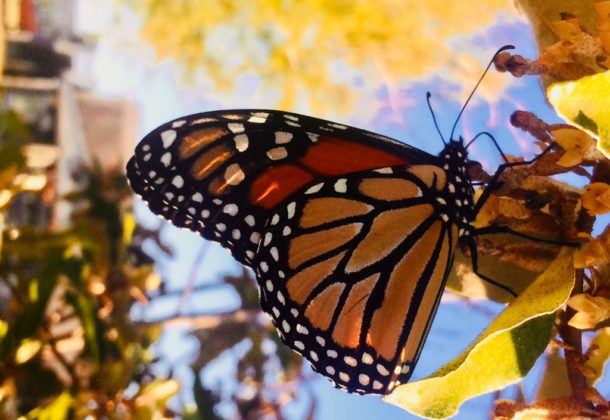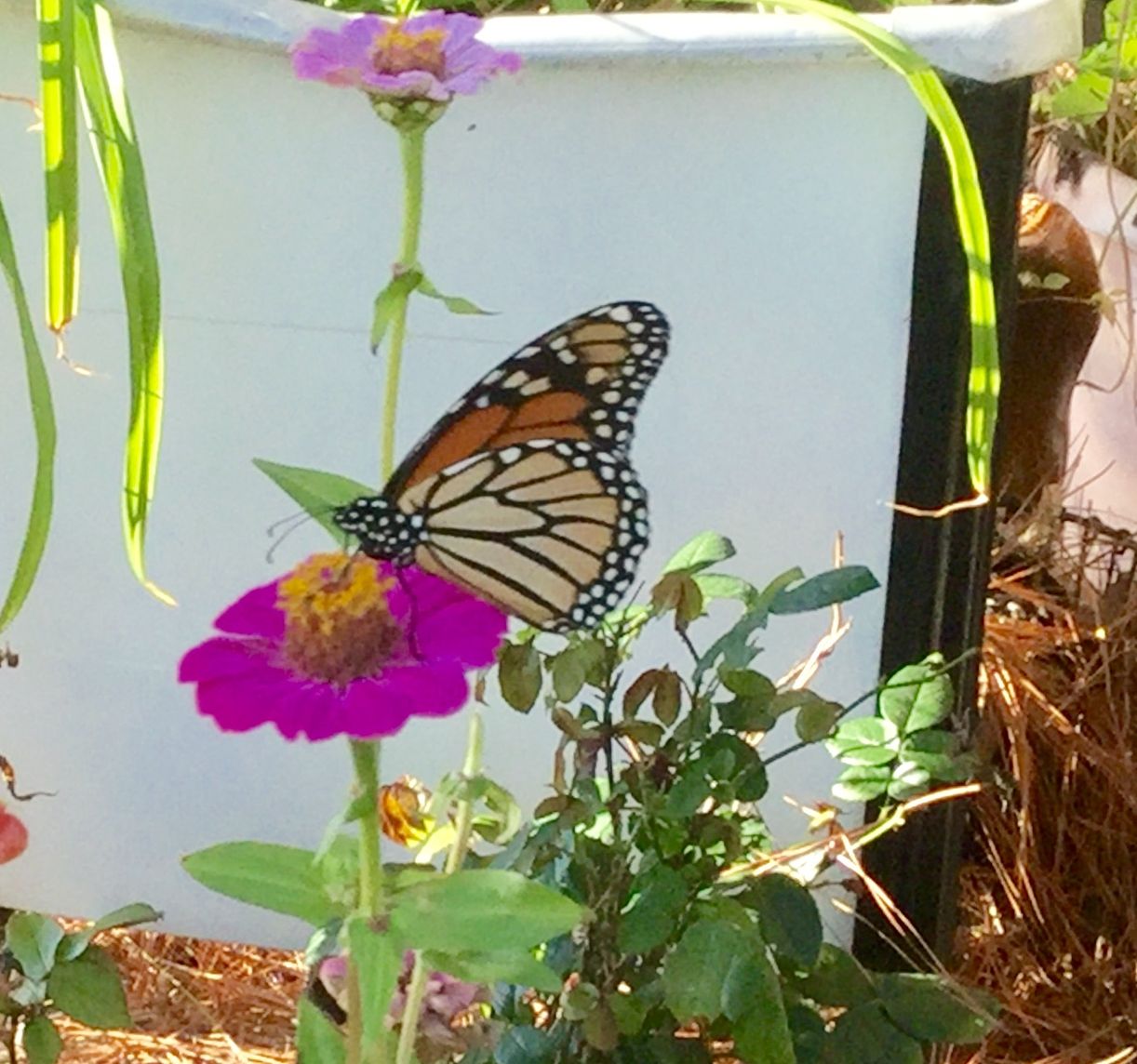The Monarchs Leave Cold Weather Behind

Message From the Cap’n is a compilation of fishing advice, waterman and weather insights, Chesapeake lore, and ordinary malarkey from the folks who keep their feet wet in the Potomac and St. Mary’s rivers.
Hard to believe only two weeks prior to November’s first freeze of the season that the monarchs were passing through St. George Island, MD.
Their timing, as usual, was impeccable. There was plenty of nectar for the collecting in late October as they spent the last day of their annual visit alight upon the plants and bushes across St. George Island. Both the males and females were at work.
It’s surprisingly easy to distinguish males from females. There is a black spot on the hind wing of the male monarch and the female has thicker wing veins.

Monarchs pass through St. George Island, MD, during their 2017 southern migration. Photo by Jack Russell.
Monarchs of North America undergo a multi-generational migration and complicated reproductive schedule. They travel up to three thousand miles, the only butterflies to make such a lengthy, two-way migration every year.
Monarchs begin their spring migration from the mountainsides in Mexico the second week of March and head north and east seeking milkweed plants where they will lay their eggs. These Monarchs have already made the fall, southward migration. As the new generation begins, these adults die off after a few weeks.
Plant milkweed to attract Monarchs.
Over the summer three or four generations of Summer Monarch butterflies repopulate the US and southern Canada. These Summer Monarchs live only three to five weeks. But since each female lays hundreds of eggs, the number of Monarchs increase every summer.
The fourth generation Monarchs emerge late summer or early fall. They are different than their third generation parents, second generation grandparents, and first generation great-grandparents. Like their great-great-grandparents, they will live eight or nine months. Instead of mating and laying eggs, they will spend their time collecting nectar, storing sufficient fat in their abdomens to see them through the great migration southward and then through the winter.
Cooler temperatures and shorter days mark the start of the fall migration. Weather patterns also affect the migrations of Monarchs in the fall.
They will overwinter in warmer climates in the same places their great-great-grandparents overwintered the prior year.
Monarchs at a winter resting site: Video.
The Monarchs’ fall migration is marked by stops to nectar as the fourth generation Monarchs continue to add weight, leading researches to speculate they glide on air currents rather than spend the fuel they’re storing. The fat they store must last until the next spring when they will mate, head northward to lay their eggs, and start the cycle anew.
Till next time,
Cap’n Jack
240-434-1385























